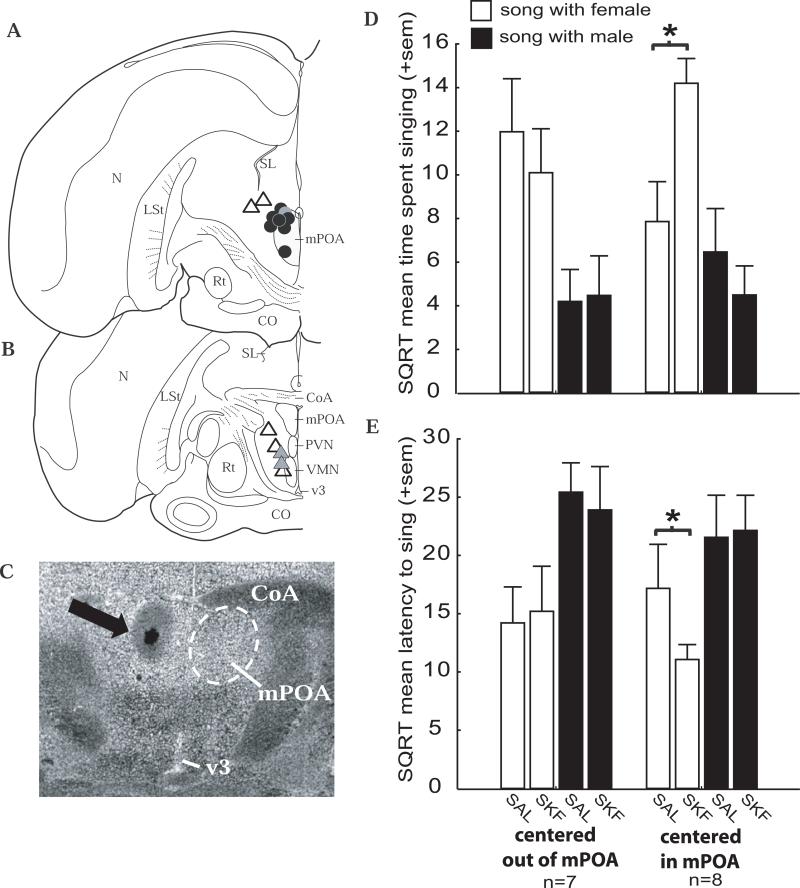Figure 1.
Stimulation of D1 receptors in mPOA affects sexually-motivated song. A and B) Locations of the cannula tip for each bird in coronal sections of one hemisphere of the starling brain. Circles represent experimental animals for which the site of injection was centered in mPOA. Triangles represent control animals for which the site of injection was centered outside of mPOA. The site of injection for the gray circle was located approximately 50 microns rostral to the dark circles, in the mPOA at the level of the tractus septomesencephalicus. The site of injection for the two gray triangles was located approximately 50 microns caudal to the anterior commissure (CoA). C) Photomicrograph showing an injection on the left side of the brain in mPOA. The cannula tip was located in the dark spot in the center of the area indicated by the black arrow, and the surrounding cloud illustrates the diffusion of blue dye (see text for details). Approximate borders of the mPOA are indicated by the dashed circle in the right hemisphere just ventral to the CoA. Other abbreviations: N = nidopallium; SL = lateral septum; LSt = lateral striatum; mPOA = medial preoptic nucleus; Rt = nucleus rotundus; CO = optic chiasm; PVN = paraventricular nucleus; VMN = ventromedial nucleus of the hypothalamus; v3 = 3rd ventricle. D - E) Bar graphs illustrating the effects of saline (SAL) and the D1 receptor agonist SKF 38393 (SKF; 0.20 μg) on sexually-motivated (open bars) and agonistically-motivated (filled bars) measures of male song for control males for which the cannula tip was centered outside mPOA (left side of each figure) and experimental males for which the cannula tip was centered in mPOA (right side of each figure). Sample sizes are indicated for control and experimental groups at the bottom of the figure. * indicates significant (p < 0.05) results of planned posthoc analyses (see text for details).

